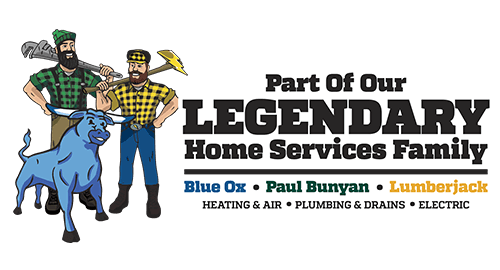Types of Trenchless Sewer Repair Methods | Minneapolis, MN
Home and property owners in Minneapolis, MN often dread sewer line repairs. Constant digging, property damage, mud and overall mess make it a very unpleasant experience. Fortunately, there are many trenches sewer repair methods that do not require large construction trenches.
Cured-in-Place Pipe
A popular trenchless sewer repair method creates a pipe within the existing pipe. Sewer drain and rainwater leader pipe replacement is better known as a Cured-In-Place Pipe, or CIPP. CIPP adds structural strength to existing piping systems without disrupting the surrounding area. New pipes are created with epoxy resins. CIPP epoxy liners are cured with hot water, steam, ultra-violet or ambient resin curing systems.
Inversion
Inversion is the common CIPP liner trenchless sewer repair installation method. A liner of resin-saturated felt is turned inside-out during installation to become the new interior pipe wall surface. An air inverter or shooter accomplishes inversion with air pressure, while a pressurized water jet or column induces inversion with water. Water inversion was used for more than 25 years before air inversion was developed.
Pull-in-Place
The second CIPP trenchless sewer repair method is pull-in-place, or PIP. A structural pipe liner made from felt, fiberglass, or other material is saturated with resin and pulled into place. Liners are pulled or winched through the existing pipe. The new pipe is formed as the resin hardens within the framework of the old pipe.
PIP liners often have a second inner liner, or double coating, for additional strength and reinforcement. The biggest advantage of this method is the ability to create stand-alone designs to reline almost any material, including clay, cast iron and other metals. Resin is mixed according to the type of original material.
This trenchless sewer repair method is very useful for lines with multiple bends and angles because resin liners are flexible and relatively easy to place. PIP also allows spot replacement of damaged areas instead of lining an entire pipe. The PIP process consists of three steps. Pipe lines are evaluated with sewer cameras first, followed by cleaning interior pipe surfaces. New liners are placed against clean, smooth interior surfaces.
Sewer Spray Lining
Sewer spray lining, also known as pipe coating, is a trenchless sewer repair method utilizing spray-on polymer resin. This sounds similar to CIPP, but spray lining does not involve a structural liner. The polymer resin spray is extremely flexible and rehabilitates sewer pipes of varying sizes. Structural pipe lining and spray lining are often used together to repair or strengthen entire drainage pipe systems without digging construction trenches.
Pipe Bursting
Pipe bursting is a trenchless sewer repair method for replacing water and gas pipes in Minneapolis, MN. A new pipe is pulled through the old pipe with a cable and pulling device. The bursting head of the new pipe exerts pressure as it enters the old pipe until the older pipe shatters. Two small holes in the ground are necessary to insert the new pipe and remove shattered pieces of the old pipe, but two small pits are much less disruptive than traditional construction trenches.
Pipebursting uses five pieces of equipment, including an expander head, pulling rods, a retaining device, pulling machine and a hydraulic power pack. Expander heads are tapered. The small front end guides the head into existing pipes. Fins along the expander head increase pressure to prevent incomplete bursting of old pipes.
The pulling machine in the receiving pit pulls the expander head and new pipe into place. A heavy chain with links weighing several hundred pounds is attached to the expander head. Hydraulic power generators are often used to power equipment. Pipe bursting operations are sometimes used for ‘upsizing,’ which is the process of expanding gas and water mains or sewer lines.
Sliplining
Sliplining was the first trenchless sewer repair method. It is a good method to repair leaks or reinforce structural stability of existing pipelines. A carrier pipe is inserted into the original host pipe, which remains in place. The carrier pipe has a smaller circumference than the host pipe.
Carrier pipes are made of various materials including fiberglass-reinforced pipe (FRP), high-density polyethylene (HDPE), and PVC. The most common size of sliplining pipes is 0.20m – 1.5m, but this method can be used for almost any size above 10-millimeters if the carrier and host pipes are compatible. This method can not be used for pipes with a radial clearance less than 10-millimeters because standard metric pipe sizes do not match internal diameters of old cast iron pipes. A 10-millimeter pipe does not leave enough room for pipes that do not fit neatly and require alteration. Two methods, continuous and segmental, are used for slipline installation.
Continuous Sliplining
Continuous sliplining connects long pipes, such as fusible PVC or welded steel pipes, into continuous pieces that extend to any length. The long pipe, or series of pre-connected pipe segments, is pulled through the existing pipe.
This method requires an insertion pit and receiving pit at the beginning and end of the original pipe. Sometimes manholes or other access points can be used as insertion or receiving points.
Segmental Sliplining
Segmental sliplining differs from continuous sliplining mainly based on the material of new carrier pipes. Bell and spigot pipes, such as PVC, HDPE, FRP, or spirally welded steel, are lowered into place in segments instead of connecting them before installation. The individual pieces are pushed together after placement in the existing pipe interior.
Advantages of sliplining trenchless sewer repair over traditional excavation trenches include lower costs, minimal service disruptions, very little damage to surface property, and addition of new structural pipes even though old pipes are not removed. Annular grouting is necessary in many sliplining projects to prevent leaks, reduce movement of backfill materials, and secure new pipes and liners in place. Proper grouting also increases the functional lifespan of the pipe system.
Contact the professionals at Paul Bunyan Plumbing & Drains in Minneapolis, MN if you suspect you need trenchless sewer line repair services. The experienced technicians can help you identify the problem and find the best solution with minimal property disruption.


